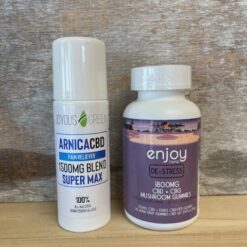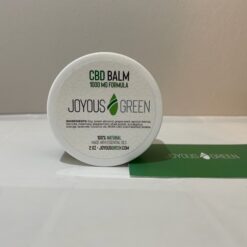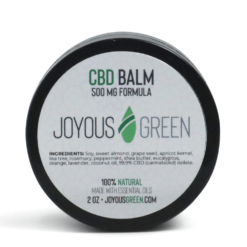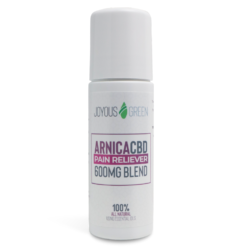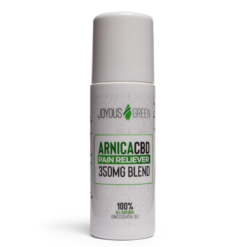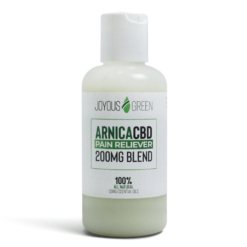Bioavailability is one of those terms that you have likely come across. You’ll see it on CBD and wellness blogs such as this one, and in articles in newspapers and magazines. But what exactly is it? First, let’s grab the dictionary definition:
Bioavailability | bi·o·a·vail·a·bil·i·ty noun | PHYSIOLOGY
the proportion of a drug or other substance which enters the circulation when introduced into the body and so is able to have an active effect.
In other words, how much of a substance finds its way into your bloodstream and can actually take effect? With CBD the goal is to get it to your endocannabinoid system (ECS), and your bloodstream is a perfect conduit. When discussing the bioavailability of CBD it comes down to two things. 1. The quality of the product and 2. how you take the product. There are four main ways that you can use CBD.
- Oral (edibles such as gummies)
- Sublingual (tinctures and oils)
- Topical (topical oils, lotions, and balms)
- Inhale (such as vaping or smoking hemp flower)
The fourth in our list we won’t be doing a deep dive on. Why? Because inhaling vaporized oil or smoking a burning flower is simply not good for you. No matter how effective it is at delivering CBD into your body, the fact that you must harm your lungs to do so makes it a non-starter for us.
No matter how effective [vaping] is at delivering CBD into your body, the fact that you must harm your lungs to do so makes it a non-starter for us.
If you want to read more on the dangers of vaping and the damage it can do read this article from the Mayo Clinic published by the New England Journal of Medicine. So let’s look at the other three methods and discuss how effective they are at delivering CBD.
Oral – Bioavailability of CBD Edibles
CBD edibles and drinks are everywhere these days. From your local coffee shop or juice bar, or neighborhood CBD retailer, you can’t miss them. But how good are they are actually getting CBD into your body? Current data shows that edibles have a bioavailability rate between 6 and 20 percent. What does this mean? On the low end, this means a 10MG edible will have an effective uptake of .6MG. On the high end, that same edible will give you up to 2MG of CBD. Why is this?
You should actually rejoice in knowing that your edible’s effectiveness is this low. Because this means that your body is functioning as it should. After eating an edible it finds its way into your digestive system, and most importantly, the liver. Your liver filters blood from your digestive tract. While doing this it detoxifies chemicals and metabolizes drugs. So most of the CBD in your edible gets filtered out and passed as urine or stool.
…most of the CBD in your edible gets filtered out and passed as urine or stool.
But don’t rule edibles out just yet. Even though it has a low bioavailability rate, it is still a great way to ingest CBD. Some have a hard time with sublingual oils, which can cause upset stomachs in those prone to it. But the way an edible breaks down it is softer on your system. To get the most out of your edibles, adjust the dosage up as needed.
Sublingual – Bioavailability of CBD Oils and Tinctures
Taking CBD as a sublingual supplement is a great way to get CBD into your system. To do so you place the desired amount of oil under your tongue and let it sit. Each brand seems to have a different time here, but we recommend a minimum of 30 seconds. If you can go 60 to 90 seconds that’s even better. Oils and sprays bypass your digestive system which allows the CBD to absorb into your sublingual glands. These glands sit under your tongue and take the CBD into your bloodstream.
Oils, tinctures, sprays, and mints taken in this way have a bioavailability rate between 12 and 25 percent. There are two reasons for this. First, enzymes in your mouth break down CBD before it absorbs. Second, the quality of CBD matters and low-quality tinctures will have low rates of bioavailability. This is, in our opinion, the absolute best way to get higher doses of CBD for therapeutic use. The high bioavailability rate and the simple act of dropping oil under your tongue make it perfect. The CBD is able to get into your ECS and start to affect your CB1 and CB2 receptors.
Topical – Bioavailability of Topical CBD Lotions, Creams, and Oils
Topical CBD products have exploded in the last year. They have gone from a small part of the market to one of the largest verticals. We started our company with a CBD topical and have been making it for over three years now. But one thing you need to know is that the rate of bioavailability for topical products is 0%. I’m sure that number sounds scary because 0% means it can’t be effective, right? Well, not quite. Topicals aren’t meant to get into your bloodstream.
In fact, your body does this on purpose. Your skin is highly resistant to moisture as a protection mechanism. But, when CBD based topicals are used on the skin, their purpose isn’t to get into your bloodstream. Instead, they activate the CB1 and CB2 receptors within your skin tissue. The reason they exist here, and in large numbers, is that your skin produces endocannabinoid molecules. These two molecules are arachindonylethanolamide (AEA, also known as anandamide and 2-arachindonyl glycerol or 2-AG). By working with the CB1 and CB2 receptors, CBD increases your body’s ability to use naturally occurring endocannabinoids. So while CBD topicals have a 0% bioavailability rate, they have big impact on your bodies natural ECS. The natural anti-inflammatory properties of endocannabinoids are therefore boosted.
Shop Topical Pain Relievers
What Does This All Mean?
In the end, what is most important is for you to begin to understand how CBD is absorbed and used in your body. Your endocannabinoid system is complex and new research is released every month. So arming yourself with information on the bioavailability of CBD is the first step in understanding how CBD can help you live a better life. If you have any questions, please leave them in the comments below.
 Free Shipping on Orders of $69 or More
Free Shipping on Orders of $69 or More
